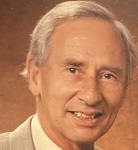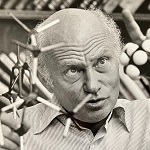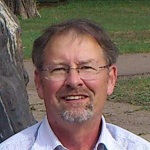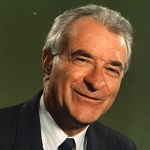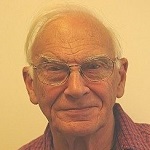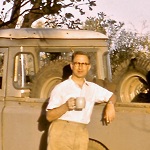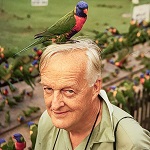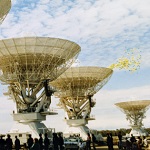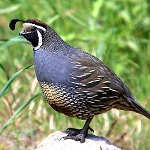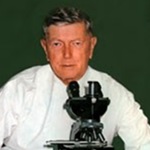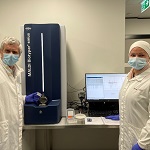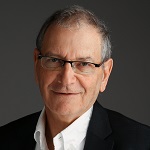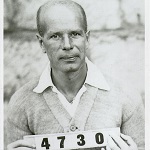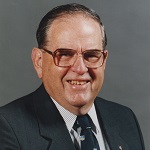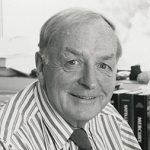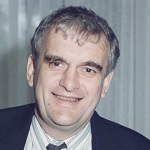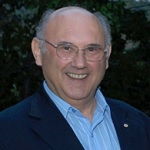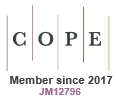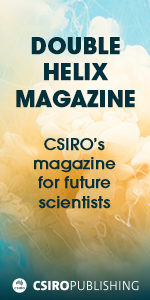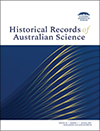
Historical Records of Australian Science
Volume 36 Number 1 2025
Dr Michael (Mike) Raupach transformed our scientific understanding of how the Earth’s climate system operates. We describe the trajectory of Mike’s research from his early focus on the interactions between crops and forests and the atmosphere, to the bigger canvas of the biosphere’s influence on regional and global weather and climate. Mike’s lifetime of research continues to profoundly influence the science of Earth’s interconnected biosphere-climate system, and defines the role that humans must play in sustaining our planet’s health.
HR24030 Abstract | HR24030 Full Text | HR24030PDF (2.6 MB) Open Access Article
G. E. (Tim) Wall was one of the leading algebraists of the twentieth century. He was elected a Fellow of the Australian Academy of Science in 1971. This Memoir recounts his early years in Adelaide, some details of his family, the influence of Professor Schwerdtfeger, a German refugee, on his work, as well as giving an outline of his major research contributions. Photograph supplied by his family; photographer unknown.
HR24032 Abstract | HR24032 Full Text | HR24032PDF (1.2 MB) | HR24032Supplementary Material (2.4 MB) Open Access Article
Sev Sternhell DSc AO FAA FRACI CChem, 1930–2022, was a prominent figure in Australian organic chemistry, academia and public life for more than forty years. He held the Chair of Organic Chemistry at the University of Sydney from 1977 until his retirement in 1998. Sev was very influential through his science and his leadership in Australian chemistry. He is best known for his development of NMR spectroscopy as a tool to unravel the structures of organic compounds. Photographer unknown, supplied by his family.
HR24033 Abstract | HR24033 Full Text | HR24033PDF (2.4 MB) | HR24033Supplementary Material (20.9 MB) Open Access Article
In the early 1980s two people—Barrie Hunt and Hal Gordon—began developing a model suitable for performing global climate change experiments. This led to the CSIRO Climate modelling program that achieved great success in contributing to international climate change assessment programs up until 2013. This success is indicated by nearly 10,000 citations in the published literature, including almost 300 citations in 2024. Photograph by Kira Smith.
Priority setting for publicly funded research is a continuing challenge. This is an account of the development and evolution of the method devised by CSIRO in 1990, and since adapted for use at different organisational levels by CSIRO and other agencies in Australia and overseas. It is an adaptable and robust method for ranking and displaying priorities with the potential for future use in public research decision making.
HR25003 Abstract | HR25003 Full Text | HR25003PDF (1.8 MB) Open Access Article
For more than seventy years, Professor Derek Denton investigated physiological and pathophysiological mechanisms regulating bodily salt and water balance. His groundbreaking work led to new treatments for patients suffering from fluid and electrolyte abnormalities. He played an important role in the establishment of the Howard Florey Institute of Experimental Physiology and Medicine, and was its founding Director (1971–89). On retiring as Director, he spent the final thirty years of his life studying the brain’s role in instinctive behaviours. Photograph by Sam Critchley.
HR24029 Abstract | HR24029 Full Text | HR24029PDF (1.8 MB) | HR24029Supplementary Material (654 KB) Open Access Article
Robert (Bob) Crompton, a towering figure in low energy electron and ion physics in Australia, passed away in June 2022. He was known internationally for his seminal publications on swarm physics, atomic and molecular physics and gaseous electronics, and for his widely-read monograph with Sir Leonard Huxley on the subject of charged-particle transport. He was the recipient of many personal and professional accolades and awards for his contributions to science, science policy and the general community. Although born and educated in Adelaide, Crompton spent the majority of his long career at the Australian National University in Canberra in the Research School of Physics and Engineering
HR24028 Abstract | HR24028 Full Text | HR24028PDF (1.4 MB) | HR24028Supplementary Material (325 KB) Open Access Article
Warning: This article discusses blood collecting in Aboriginal and Torres Strait Islander peoples. It also contains the image of an unnamed Aboriginal man who may be deceased.
It is not without justification that the collecting of blood for genetic analysis is frequently associated with race science, but it is not solely or inevitably so. This history of Robert Kirk, a British–Australian population geneticist, provides nuance to twentieth century blood science. Once problematic, Kirk’s legacy collection now returned to Indigenous control provides a promising future. Photograph: 01P-02-27, NCIG Archive, ANU, Canberra © Kirk family.
HR24023 Abstract | HR24023 Full Text | HR24023PDF (1.7 MB) Open Access Article
In 1966 the ‘marriage bar’ was removed for women working in the Commonwealth public service in Australia. During that year the Astronomical Society of Australia (ASA) was founded. We consider the changes in the diversity of astronomers working in Australia, including male/female ratios, since the formation of the ASA, and the development of gender equity strategies in astronomy. As well, we examine the experiences of Australian women astronomers and those of people from marginalised groups in astronomy. Photograph reproduced with permission from the IDEA ASA website.
HR24022 Abstract | HR24022 Full Text | HR24022PDF (2.1 MB) Open Access Article
Dr Ferdinand von Sommer (~1800–49) served as Western Australia’s first government geologist and had ‘Mount Sommer’, north of Perth, named after him. Ferdinand also left behind three exceptional maps of his surveying and prospecting activities (1847–8) as well as reports to the government that can be considered impressive for their time and context, even by today’s standards. His scientific endeavours are worth re-discovering. Photograph of the author is by Matt Jelonek.
HR24025 Abstract | HR24025 Full Text | HR24025PDF (4 MB) Open Access Article
Beyond helping us to identify birds, field guides sharpen our environmental awareness, deepen our connectedness to nature and foster a commitment to conservation. These facets of the field guide inspired the efforts of the leading American innovator of the genre, Roger Tory Peterson, as well as the Australian field guide authors who came under his influence in the 1950s and after. This article explains how Peterson helped shape Australian birding guides, and hence the relationship between birds and people in this country. It also recounts Peterson’s birdwatching adventures on his visits Down Under. Photograph courtesy of the Roger Tory Peterson Institute.
HR24021 Abstract | HR24021 Full Text | HR24021PDF (2.5 MB) Open Access Article
Australian astronomical research has changed drastically since the formation of the Astronomical Society of Australia in 1966. Here, we look at the changes in the context of the membership of the society and explore how the advent of new research facilities has led to changes in the number and geographical location of Australian astronomers. In particular, locating new radio telescopes in Western Australia has resulted in a more even spread of astronomers across the country. Photograph by Nick Lomb.
HR24020 Abstract | HR24020 Full Text | HR24020PDF (1.3 MB) Open Access Article
Acclimatisation—that is, the introduction of plants and animals to Australia from other parts of the world—is often seen as a nineteenth-century phenomenon. Focusing on wild bird species, this article argues, on the contrary, that acclimatisation continued well into the twentieth century. This article provides a cultural and political explanation for Australians’ belated turn against so-called ‘invasive species’ in the 1930s, ascribing this shift in attitudes to settler nationalism and xenophobia. Photograph by Alan Schmierer, via Wikimedia Commons.
HR24019 Abstract | HR24019 Full Text | HR24019PDF (888 KB) Open Access Article
When myxoma virus was first released in Australia it quickly attenuated into less virulent variants while rabbits became increasingly resistant to myxomatosis. Rather than rabbits outstripping virus virulence, however, myxoma viruses have since been selected for renewed virulence which optimises their transmissibility. As well as benefitting the biological control of pest rabbits, this previously unrevealed chapter emphasises problems scientists had in reaching a consensus on how myxoma viruses and their host coevolved. Photograph courtesy of the Walter and Elisa Hall Institute of Medical Research.
Global movement of plants and plant products brings risk of pests including weeds, invertebrates, and plant pathogens. Australia’s adaptive biosecurity system continues to mitigate these risks, using plant quarantine and modern diagnostics to isolate, detect and diagnose exotic pathogens. Photograph by Department of Agriculture, Fisheries and Forestry.
This article belongs to the collection: Plant Pathology in Australasia.
HR24012 Abstract | HR24012 Full Text | HR24012PDF (897 KB) Open Access Article
David Albert Cooper AC (1949–2018) was an internationally renowned immunologist and HIV clinician who spearheaded Australia’s world-leading HIV response. In this article, his colleagues reflect on his contributions to HIV and infectious disease research, health policy, and the research institute he led for thirty-two years, the Kirby Institute.
HR23032 Abstract | HR23032 Full Text | HR23032PDF (1.9 MB) Open Access Article
Dr Angus McEwan FAA FTSE who died on 5 September 2018, aged 81, was a renowned Australian fluid dynamicist, specialising in designing and conducting experimental studies in geophysical fluid dynamics, and providing outstanding leadership of national and international research programs in oceanography and meteorology. Image credit: Angus D. McEwan, personal communication.
HR24005 Abstract | HR24005 Full Text | HR24005PDF (1.4 MB) | HR24005Supplementary Material (380 KB) Open Access Article
Peter Pringsheim, professor of physics at the University of Berlin, has a unique connection with Australia. His attendance at the 1914 conference of the British Association for the Advancement of Science, held in Melbourne, coincided with the outbreak of World War 1, and he was interned as an enemy alien until July 1919. But with the support of key local scientists, Pringsheim used his internment to write a treatise on fluorescence and phosphorescence which established him as a world authority on this branch of atomic physics. Photograph: SP 421/4 4730 Peter Pringsheim, National Archives of Australia.
HR24006 Abstract | HR24006 Full Text | HR24006PDF (6.7 MB) Open Access Article
Dr William (Bill) Roderick Blevin was an outstanding physicist and a renowned metrologist who brought great credit to metrology in Australia, particularly in the field of photometric and radiometric measurement. His research associated with an independent determination of the Stefan–Boltzmann constant led to a redefinition of the international unit for light intensity. His expertise and standing are recognised by the prominent role he played on international committees associated with the Metre Treaty and his leadership nationally. Photograph: Courtesy of Australian Academy of Science.
Jeremy Pickett-Heaps was a biologist whose acute observational powers were fed by a deep fascination for how cells work; he had an affinity for the myriad diversity of algae and other protists in general and for what they could teach us about all cells. He made fundamental discoveries in plant cell division and green algal phylogeny that developed into studies on cell division in general and he mastered time-lapse micro-cinematography to document the dynamic lives of cells. The resultant movies and his enthusiastic teaching introduced many to the wonders of microscopic life. Photographer unknown.
HR24017 Abstract | HR24017 Full Text | HR24017PDF (4.4 MB) | HR24017Supplementary Material (276 KB) Open Access Article
Ross Taylor, an internationally renowned geochemist and planetary scientist and a Companion of the Order of Australia, spent most of his 65-year career at the Australian National University. His laboratory expertise was in trace element geochemistry and he made numerous major discoveries about the nature of the Moon, Earth’s continents, tektites and solar system evolution. In 1969, he carried out the first-ever geochemical analysis of a lunar rock (Apollo 11) at the NASA Lunar Receiving Laboratory in Houston. Photograph credit: Australian Academy of Science.
This paper is a biographical note on the life and achievements of Professor Gavin Brown. Gavin was a distinguished mathematician who became vice chancellor of both the University of Sydney and the University of Adelaide. He made a significant contribution to his subject area and to the Australian academic scene. Source: Australian Academy of Science archives.
HR23024 Abstract | HR23024 Full Text | HR23024PDF (1.5 MB) | HR23024Supplementary Material (932 KB) Open Access Article
After graduating in medicine at the University of Queensland, completing his PhD at the Kanematsu Institute in Sydney, and postdoctoral studies in Germany, in 1966 John Atherton Young he joined the department of physiology at the University of Sydney where his research on the physiology of epithelial ducts brought him international recognition as a leader in the field. He made significant contributions to university governance and professional societies and respected as a man of great culture, a witty conversationalist, a great scientist.
HR24007 Abstract | HR24007 Full Text | HR24007PDF (1.6 MB) | HR24007Corrigendum (675 KB) | HR24007Supplementary Material (608 KB) Open Access Article
HR23028Anthony George Klein 1935–2021
Professor Anthony (Tony) George Klein AM, FAA (1935–2021) was an outstanding physicist, university teacher, leader, mentor and science communicator. We recount Tony’s life from his childhood in wartime Romania through to his extended career as a professor of physics at the University of Melbourne. The memoir describes Tony Klein’s personal qualities, his major research contributions and collaborations in the field of neutron optics and neutron interferometry and his services to the scientific community. Image courtesy of Australian Academy of Science.
HR23028 Abstract | HR23028 Full Text | HR23028PDF (2.2 MB) | HR23028Supplementary Material (378 KB) Open Access Article
Gerry Wake spent almost all his working life at the University of Sydney; beginning undergraduate studies in 1951, through an MSc and PhD in 1958 and returned after two years overseas to a Lectureship in the Biochemistry Department. His research flourished with notable discoveries being the mechanism of stabilisation of casein micelles, the circular nature of the Bacillus subtilis chromosome and bidirectionality of its replication. A professor from 1977 to 1999, he influenced a generation of biochemists with many former research students having remarkable scientific careers. Wake family photograph.
HR23030 Abstract | HR23030 Full Text | HR23030PDF (2.4 MB) | HR23030Supplementary Material (620 KB) Open Access Article
HR24026Bibliography of the history of Australian science, no. 45, 2023/24
HR23019_COCorrigendum to: William (Bill) Francis Budd 1938–2022
HR23019_CO Full Text | HR23019_COPDF (676 KB) Open Access Article
HR24007_CO Full Text | HR24007_COPDF (680 KB) Open Access Article




